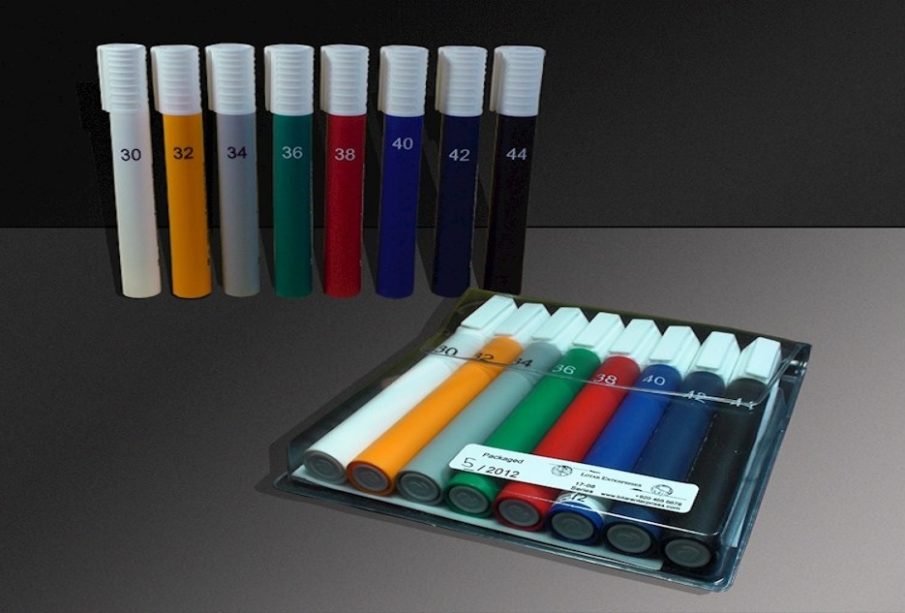Essential Information about Dyne Pens – Application & Working

Ink or coatings tend to adhere to plastic substrates however, it may differ depending on the type of surface. The main reason for the ink to either adhere to the surface or not is the surface energy. This is also referred to as the dyne level of a material. Thus, the dyne level of material plays an important role in how well the ink adheres to the surface.
Dyne level is essentially the reactivity of the surface of a solid substrate in reference to a liquid. This is measured in energy units like dyne/cm. Dyne Pens are used to measure surface tension. They are available in the range of 32 – 59 dyne/cm, in the increment of 2.
It provides an accurate estimation of the surface energy which is also referred to as ‘wetting tension’. The wetting tension is obtained with the help of dyne ink and dyne pens which use a quantitative correlation between water contact angle values obtained with the surface. This article describes the applications of dyne pens and provides many useful tips to understand working for a dyne pen.
Applications of Dyne Pens
The main application of the dyne pens is for the purpose of dyne testing and it has a great number of applications in several industries. It is useful to measure the treatment level of polymers exposed to flame, corona, or plasma surface modifications. This is also a measure of the surface tension levels of a solid substrate.
How does it work?
This works by penetrating the substrate and is mainly due to surface energy. Here are several tips to help you better understand how this works:
- Ensure the dyne pen is not contaminated or outdated and always stored at room temperature.
- Prior to testing the surface, it is necessary to check the substrate is clear of any damage and clean as well.
- Prior to using the dyne pen, make sure the pen tip is saturated.
- Draw a line using light pressure. It is necessary to draw three parallel lines using the dyne pen on the test area selected. The way this works is that the result of the first two lines is not to be considered. The third parallel line made by the pen needs to be examined.
- It is important to make note of the time it takes for the solution to bead up after it has been applied. It may also shrink and stay wet.
- In the case where the solution does not bead up after 3 seconds, it is necessary to repeat the process, but this time using a higher dyne pen. On the other hand, if the solution breaks up into droplets in less than 3 seconds, you will need to repeat the process using a lower dyne pen.
- The dyne pen is a match if the ink holds for 1 to 3 seconds before fading away and losing its integrity.
- It is necessary to spread the fluid using dyne test markers over an area of 7 cm for the purpose of the test.
- During this test process, it is necessary to make sure the test area is not touched or contaminated in any way.
- It is vital that the ink is not exposed to the atmosphere for very long. In the case where this does happen it is necessary to replace the ink on a regular basis.
- For example, if the ink is exposed on a daily basis, it is advisable to dispose of the ink within 3 months. If it is exposed on a weekly basis it is necessary to dispose of the ink within 6 months.
- Press implement tip solidly down on subject material until the tip is immersed with ink. Utilize a light touch to draw the pen over the test in a few equal passes.
- Dismissal the first pass; to flush any tainting from the tip, and to guarantee that the test liquid layer is dainty enough for exact estimation, assess just the last pass.







